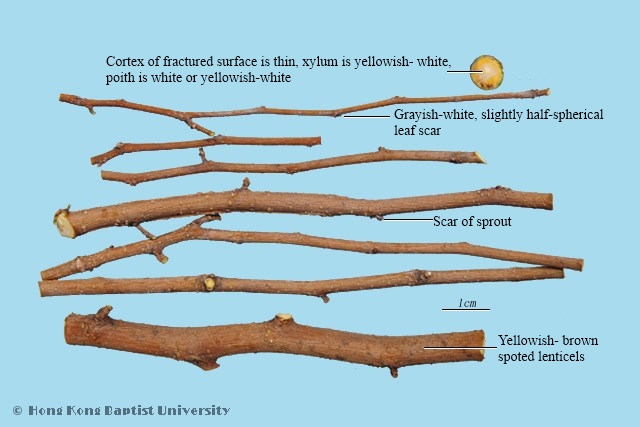Production RegionsPrimarily produced in the Chinese provinces of Anhui, Jiangsu, Zhejiang, Hunan, Sichuan.
Macroscopic FeaturesLong cylindrical, uneven length, 0.5~1cm diameter. Externally grayish-yellow or grayish-brown, with numerous pale brown spotted lenticels and thin longitudinal lines, with obvious grayish-white half-moon-like leaf scars and brownish-yellow leaf sprouts. Firm and pliable texture, with flexibility, relatively hard to break, fractured surface is yellowish-white, fibrous. Angular cut slices are elliptical, about 2mm long. Cortex of cut surface is relatively thin, xylem is yellowish-white, radial lines are dense, center has tiny soft pith. Grass-like odor, tasteless and slightly sticky.
Quality RequirementsSuperior medicinal material is tender, with yellowish-white fractured surface.
PropertiesBitter, neutral
FunctionsDispels wind, promotes joint, moves water and qi. Apply to wind-damp impediment, spasm of limbs, beriberi and edema, wind-itching of skin.
Processed FormFried sang zhi: Fry sang zhi slices with slow fire to pale yellow, then cool, as medicinal material. Processed sang zhi: fry cleaned sang zhi slices with brans to dark yellow, remove brans and cool. Wine sang zhi: wine-fried sang zhi. Spray wine over sang zhi slices, covered and absorb all the wine, then fry with slow fire to slightly yellow. Promote the effect of dispelling wind and freeing channel.
OriginThe dried tender branches of Morus alba L.(Moraceae)
